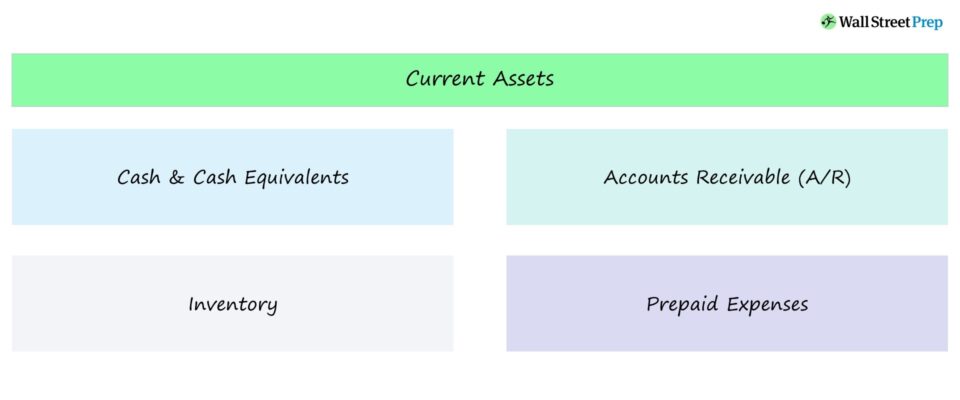What are Current Assets?
The Current Assets categorization on the balance sheet represents assets that can be consumed, sold, or used within one calendar year.

What is the Definition of a Current Asset?
Current assets are recorded on the assets side of the balance sheet (B/S), on top of the non-current assets section.
The balance sheet, one of the core three financial statements, is a periodic snapshot of a company’s financial position.
Together, current assets and non-current assets form the assets side of the balance sheet, meaning they represent the total value of all the resources that a company owns.
- Current Assets: Only assets that can be converted into cash within one year are classified as “current”, and they are often used to measure a company’s short-term financial health.
- Non-Current Assets: In contrast, a non-current asset is a resource that provides economic value to a company for more than twelve months, i.e. one-year.
What are Examples of Current Assets on the Balance Sheet?
The assets section of the balance sheet is ordered from most liquid to least liquid.
The most common examples that appear on the balance sheet are the following:
- Cash and Cash Equivalents: Cash on hand, currencies, and other short-term assets such as checking accounts and treasury bills with maturity dates of three months or less.
- Marketable Securities: Short-term investments that can be converted to cash, such as money markets and certificates of deposit.
- Accounts Receivable (A/R): Cash payments owed to the company by its customers for products or services already delivered.
- Inventory: The raw materials that go into making a product, as well as units in production and finished goods.
- Prepaid Expenses: The value of goods or services that the company has paid for in advance but not yet received.
What is the Difference Between Current Assets vs. Non-Current Assets?
Non-current assets, or “long-term assets”, cannot reasonably be expected to be converted into cash within one year. Long-term assets are comprised of fixed assets, such as the company’s land, factories, and buildings, as well as long-term investments and intangible assets such as goodwill.
One important rule to note when accounting for long-term assets is that they appear on the balance sheet at their market value on the date of purchase.
Thus, unless deemed to be impaired, the long-term asset’s recorded value remains unchanged on the balance sheet even if the current market value is different from the initial purchase value.
Balance Sheet Liquidity Ratio Formulas
The term “liquidity” refers to a company’s ability to meet its short-term financial obligations.
- Liquid: If the company has enough liquid assets that can be quickly converted to cash without losing too much value to cover its current liabilities, then the company is considered liquid (and at less risk of default).
- Illiquid: If the company does not have sufficient liquid assets and cannot sufficiently cover its current liabilities, then it is considered illiquid, which is typically a major red flag to investors and creditors.
Investors can gain a number of insights into a company’s financial strength and future prospects by analyzing its near-term, liquid assets.
Of the ratios used by investors to assess the liquidity of a company, the following metrics are the most prevalent.
- Current Ratio = Current Assets / Current Liabilities
- Quick Ratio = (Cash & Cash Equivalents + Marketable Securities + Accounts Receivable) / Current Liabilities
- Net Working Capital Ratio (NWC) = (Current Assets – Current Liabilities) / Total Assets
- Cash Ratio = Cash & Cash Equivalents / Current Liabilities

Everything You Need To Master Financial Modeling
Enroll in The Premium Package: Learn Financial Statement Modeling, DCF, M&A, LBO and Comps. The same training program used at top investment banks.
Enroll Today





